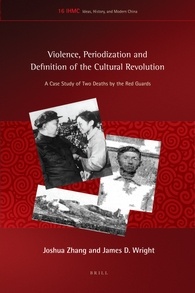The Cultural Revolution was an important event in China’s modern history. Beginning in 1966, the Great Proletarian Cultural Revolution, as it was originally known, was Mao Zedong’s attempt to extend and solidify the personality cult that had grown up around him, to purge allegedly “bourgeois,” capitalist, and traditional elements from Chinese society, and to seal his authority as the ideological leader of the Community Party of China.
Mao’s war was nominally against the “revisionists” who were allegedly infiltrating government, the polity, the economy and society at large and who were to be removed through violent class struggle. But the Cultural Revolution evolved into a much wider struggle over the future of the Chinese state. In the end, it became mainly an ideological trope that justified the wanton, brutal murders of millions of Chinese.
This book tells the story of two such murders, the murder of Mr. Wang Jin on September 29, 1966 by 31 Red Guards in the Nanjing Foreign Language School, where author Zhang was a young student at the time; and the earlier murder of Mrs. Bian Zhongyun on August 5, 1966. These two murders mark the beginning and the end of old Red Guard violence in the CR. The book is thus a history of two small incidents in a massive social injustice and also an attempt to understand the CR within the framework of modern social movement theory.
“…ground-breaking… a new and meaningful approach towards the study on Red Guard violence…” – Yonsyi Song, California State University at Los Angeles.
Joshua Zhang and James D. Wright, Violence, Periodization and Definition of the Cultural Revolution: A Case Study of Two Deaths by the Red Guards was published in 2018 in both print and electronic versions by the Dutch publisher Koninklijke Brill. For information on purchasing, visit brill.com.
